Wichita, Kansas has much more to offer visitors beyond its affordability. Known for its rich aviation history as the Air Capital of the World, Wichita has a surprising number of exciting attractions and activities that won’t cost you a dime.
| Attraction | Description |
|---|---|
| Great Plains Nature Center | Over 200 acres of natural landscapes with trails, educational exhibits, and a variety of ecosystems. |
| Ulrich Museum of Art | Located at Wichita State University, showcasing a diverse art collection with over 6,200 pieces. |
| Chaplin Nature Center | 300 acres along the Arkansas River with trails and a nature center for environmental education. |
| Wichita Art Museum | Offers a wide range of fine art exhibitions and public programs, focusing on American art. |
| Old Cowtown Museum | A historical museum that recreates the late 1800s Wichita with over 40 buildings and interactive experiences. |
| River West Festival Site | A venue for art displays and events along the Arkansas River with public sculptures and green spaces. |
| Keeper of the Plains Plaza | A tribute to Native American heritage with a prominent statue and the Ring of Fire display. |
| Mid-America All-Indian Center | Focuses on educating about Native American cultures with exhibits and events. |
| Little Balkans Museum | Highlights the history and culture of Balkan immigrants in Kansas. |
| Sedgwick County Park | A 591-acre park offering trails, disc golf, and various recreational activities. |
| Plane Talks Speakers Series | Aviation-focused talks by industry experts, reflecting Wichita’s aviation heritage. |
| Urban Prairie Wildflower Tour | A self-guided tour to explore the city’s wildflower landscapes during summer. |
From exploring fascinating museums and cultural centers to tackling miles of scenic bike paths, Wichita serves up family-friendly fun without emptying your wallet. Outdoor enthusiasts will find plenty places to play across the city while history buffs can dig into Wichita’s unique past. And if you want to tap into the city’s artistic side, there are galleries and public artworks galore.
Keep reading to discover the top 12 free things to do in Wichita that provide enjoyable ways to experience the city’s one-of-a-kind culture and landscapes. No matter your interests, Wichita invites you to come explore its many complimentary activities.
Great Plains Nature Center
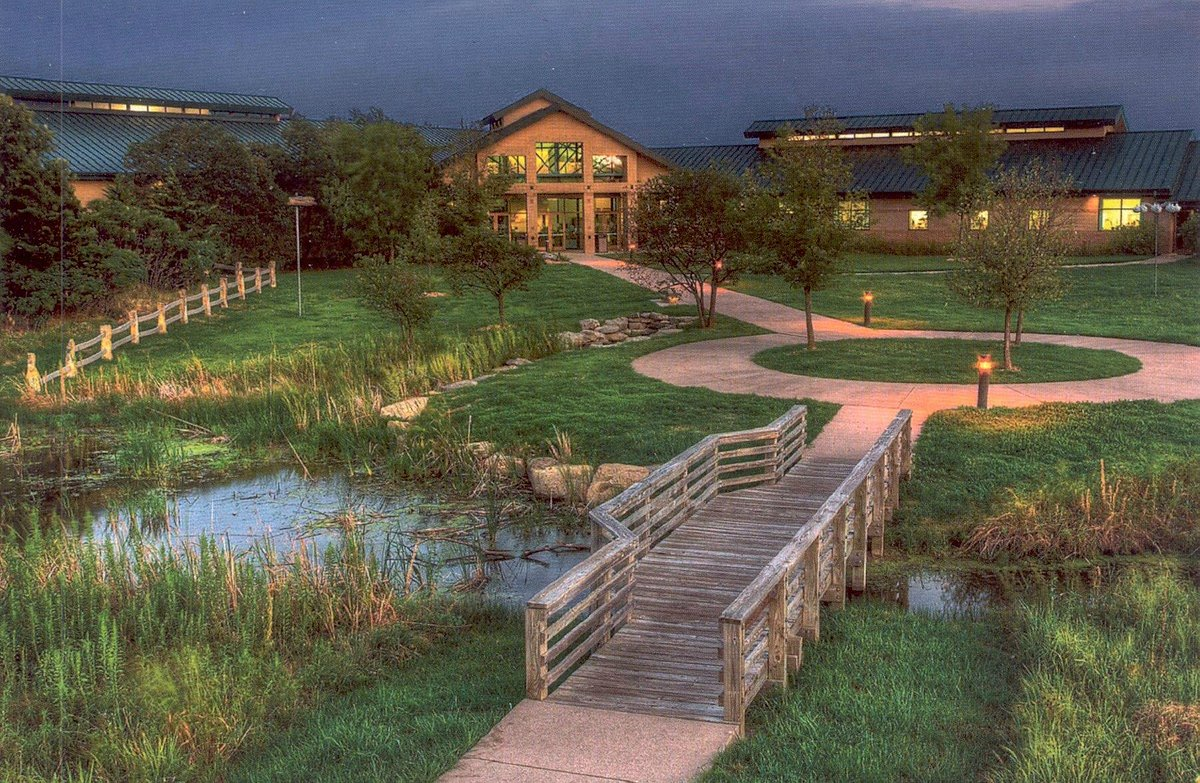
Name and Location: Located in Wichita, Kansas, the Great Plains Nature Center is a collaborative effort to educate the public about the natural resources in the Great Plains region.
History and Significance: Established to provide environmental education and promote conservation ethics, the center showcases the flora and fauna of the Great Plains, emphasizing the importance of preserving natural habitats.
What to Expect: Visitors can expect interactive exhibits, walking trails through prairie and wetland habitats, and a variety of educational programs about the Great Plains ecosystems.
Visitor Information: The center is open year-round, offering free admission. It is family-friendly and accessible, with activities and programs for all ages.
Spanning over 200 acres just east of downtown Wichita, the Great Plains Nature Center offers families the chance to immerse themselves in prairie landscapes teeming with native wildlife. The center features a variety of ecosystems including wetlands, forests and meadows to provide diverse natural habitats that visitors can explore along the site’s seven miles of trails. The Chisholm Creek Park also sits adjacent to the Nature Center, adding even more outdoor recreation opportunities like fishing and disc golf.
Inside the Great Plains Nature Center’s main building, guests will find educational exhibits highlighting area wildlife as well as the culture and traditions of Great Plains Native Americans. Be sure to check out the floor to ceiling fish tank and full-size stuffed bison display. The center also offers regular educational programming like guided nature walks and guest lecture series focusing on conservation.
Ulrich Museum of Art
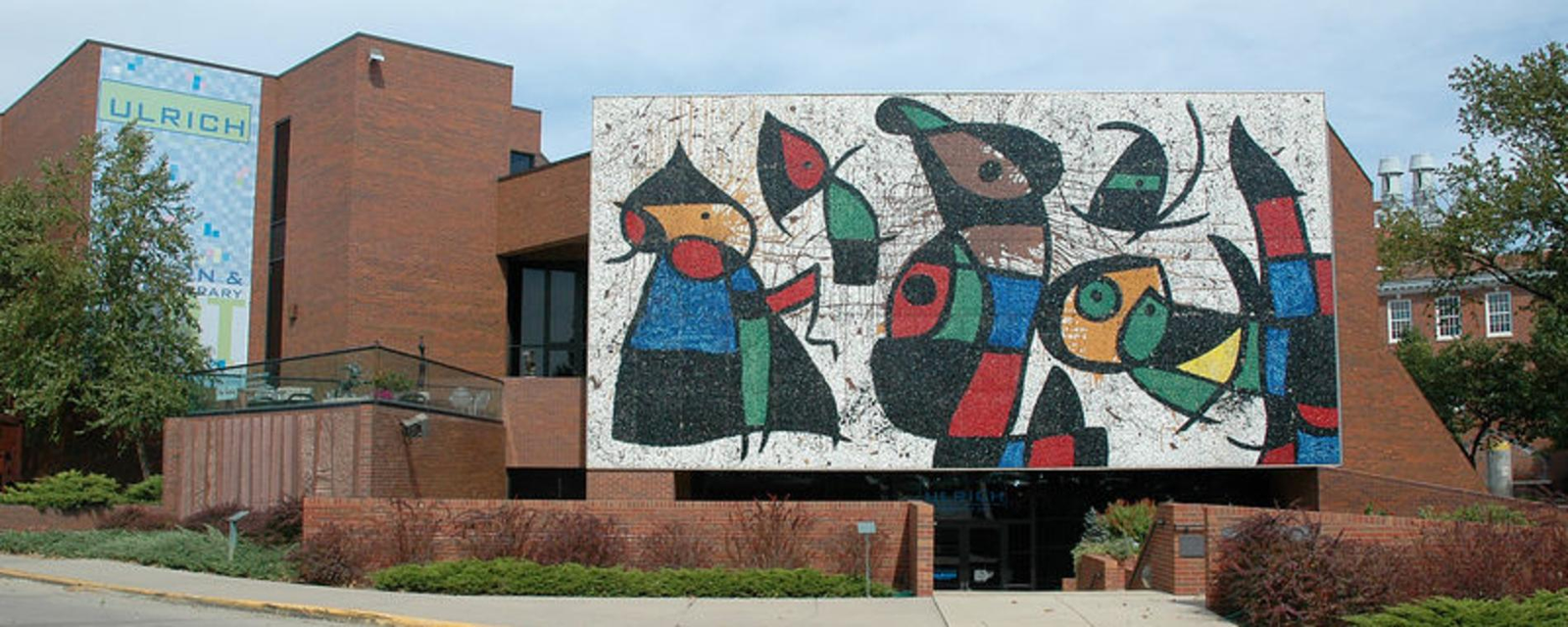
Name and Location: Situated on the Wichita State University campus in Wichita, Kansas, the Ulrich Museum of Art is renowned for its contemporary art collection.
History and Significance: Since its inauguration in 1974, the museum has focused on modern and contemporary art, including works by both established and emerging artists.
What to Expect: The museum features rotating exhibitions, a permanent collection that includes works by notable artists, and a sculpture garden.
Visitor Information: Admission is free. The museum offers guided tours, educational programs, and special events throughout the year.
Located on the Wichita State University campus, the Edwin A. Ulrich Museum of Art houses the university’s art collection with over 6,200 pieces spanning global cultures and movements. Visitors can explore the museum’s permanent collection galleries showcasing artworks in a variety of mediums including paintings, prints, sculptures and textiles. Some of the most notable artists represented include Thomas Hart Benton, Helen Frankenthaler, Sol LeWitt and Andy Warhol.
In addition to displaying art from across history, the Ulrich Museum also hosts exciting visiting and student exhibitions. The museum aims to offer thought-provoking shows that prompt dialogue and bring new perspectives on art. Public educational programs occur throughout the month like artist lectures and gallery tours. The Ulrich Museum gives community members the chance to engage with diverse art free of charge.
Chaplin Nature Center

Name and Location: Located near Arkansas City, Kansas, the Chaplin Nature Center is dedicated to preserving the natural beauty of the area and providing environmental education.
History and Significance: The center covers a diverse range of ecosystems, including prairies, forests, and river habitats, aiming to foster a connection between visitors and the natural world.
What to Expect: Hiking trails, wildlife viewing opportunities, and a visitor center with educational displays about local ecosystems and conservation efforts.
Visitor Information: Open to the public with free admission. The center offers guided tours, workshops, and other educational activities.
Set along the banks of the Arkansas River, the Chaplin Nature Center lets visitors take-in lovely riverfront views and explore 300 acres of vibrant prairie habitats via four miles of trails. One of the preserve’s more unique features is its Chisholm Creek Outdoor Classroom with seating made from limestone and logs for environmental education programming. Guests can also use the on-site canoes and kayaks to paddle along the river when staff are present.
The Chaplin Nature Center visitor building provides indoor exhibits highlighting regional animals, insects, fossils and more to delight nature lovers of all ages. Be sure check out the honey bee hive complete with a tube to the outside. The preserve also includes archery, fishing and a one-mile accessible trail. Picnic tables give guests space to unwind while appreciating the peaceful landscapes surrounding the Arkansas River.
Wichita Art Museum

Name and Location: This premier institution is located in Wichita, Kansas, showcasing American art with a focus on the region.
History and Significance: Established in 1915, the museum has grown to house a significant collection of American art, spanning three centuries with an emphasis on the art of the United States.
What to Expect: The museum features a comprehensive collection that includes paintings, sculptures, and decorative arts, along with temporary exhibitions.
Visitor Information: A small admission fee is charged, with free admission days offered. The museum provides educational programs, art classes, and special events.
With free general admission, the Wichita Art Museum lets visitors discover constantly rotating fine art exhibitions spanning styles, eras and cultures. The museum first opened in 1935 during the height of the Great Depression as a project of the Works Progress Administration. The original collection focused largely on American art, and over the years expanded to include pieces from Europe and Asia.
Today the museum showcases iconic works in painting, sculpture, photography and contemporary art across 27 galleries. Some collection highlights include pieces by Mary Cassatt, Dale Chihuly, John Steuart Curry and Winslow Homer. In addition to displays from its permanent collection, the Wichita Art Museum hosts several visiting exhibitions annually that dive deeper into certain artists or movements. Public programs also occur regularly like lectures, style classes and events.
Old Cowtown Museum

Name and Location: Set in Wichita, Kansas, the Old Cowtown Museum is a living history museum that recreates a Midwestern town from the late 19th century.
History and Significance: The museum offers a glimpse into the life and times of the early settlers of Wichita, emphasizing the cultural and historical context of the period.
What to Expect: Historical reenactments, authentic buildings and furnishings, and demonstrations of period crafts and trades.
Visitor Information: There is an admission fee. The museum hosts special events, educational programs, and offers guided tours for a deeper historical experience.
Providing a peek into frontier life, Old Cowtown Museum has recreated the old cattle town of Wichita with over 40 historical buildings to explore. Costumed interpreters roam the streets to offer insight into settlers’ daily work and lives. Many structures like the church, schoolhouse, farmstead, saloon and shops feature historical artifacts so visitors can imagine themselves back in the late 1800s. Visitors can even take a ride on a horse-drawn trolley around the museum’s grounds.
Aside from getting immersed in Old Cowtown’s main town, guests can check out additional displays highlighting occupations crucial to Wichita’s early boom. The Freight Office explains how railroads connected cattle towns while the Print Shop traces early publishing and information. Kids will especially enjoy trying hands-on activities like pumping water, writing on slate boards and playing old-fashioned games. History truly comes alive wandering Old Cowtown’s fascinating 19th century replica town.
River West Festival Site

Name and Location: Situated along the Arkansas River in Wichita, Kansas, this festival site hosts a variety of outdoor events and activities throughout the year.
History and Significance: Developed to provide a versatile outdoor venue for the community, it supports cultural, entertainment, and recreational activities.
What to Expect: Depending on the season, visitors can enjoy music festivals, food fairs, sporting events, and other community gatherings.
Visitor Information: Event schedules and admission fees vary. The site is accessible and offers amenities like parking and food vendors during events.
For art displays set against gorgeous Arkansas River backdrops, head to the River West Festival Site along the banks of the river in downtown Wichita. The River West Art District located next door features a collection of more than 30 engaging sculptures created through the city’s popular Temporary Art Initiative for display from 3-5 years. Some standout installations include large multi-colored always starting to bloom, metal pipe archways called Portal Gates and painting-covered walls designed by artist Robert Hodgell.
Aside from perusing the eclectic mix of public art, the Festival Site itself offers expansive green space and paved paths perfect for picnics. The connected WaterWalk development next door also has fountains, gardens and additional artworks for visitors to enjoy. From live music concerts and food festivals in the summer to holiday light shows in the winter, the River West Festival Site gives community members an ever-changing space to gather and play with no admission fee.
Keeper of the Plains Plaza
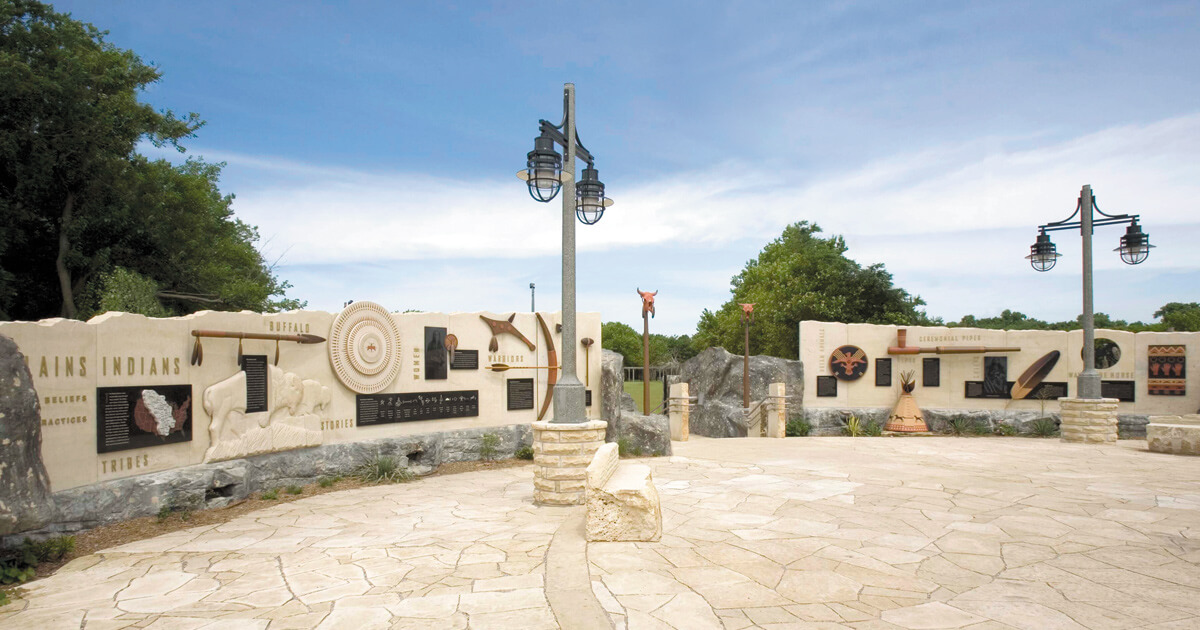
Name and Location: This iconic landmark in Wichita, Kansas, features a majestic sculpture at the confluence of the Big and Little Arkansas rivers.
History and Significance: The plaza and its centerpiece sculpture, created by Native American artist Blackbear Bosin in 1974, symbolize the unity of cultures in the region.
What to Expect: An impressive display of public art, a pedestrian bridge, and fire pots that are lit during special ceremonies, offering a spectacular view.
Visitor Information: Free and open to the public, the plaza is a popular spot for photography and provides an educational experience about local history and culture.
Honoring the Native American heritage of Kansas, the Keeper of the Plains plaza provides a stunning tribute to the region’s first inhabitants. The site centers around the Keeper of the Plains statue featuring a prominent Native American figure in full headdress standing with arms outstretched. At night, the statue appears even more striking illuminated by the Ring of Fire pylons creating a glowing light display.
The circular plaza includes stonework replicating Native American petroglyphs as well as the Walk of Honor listing tribes that once called Kansas home. Every spring and fall equinox, the Keeper of the Plains site becomes the gathering spot for local tribes to celebrate their traditions and culture. Beyond its symbolic importance, the scenic vistas of the Arkansas River meeting downtown Wichita’s skyline have made Keeper of the Plains one of the city’s most iconic landmarks for photos.
Mid-America All-Indian Center
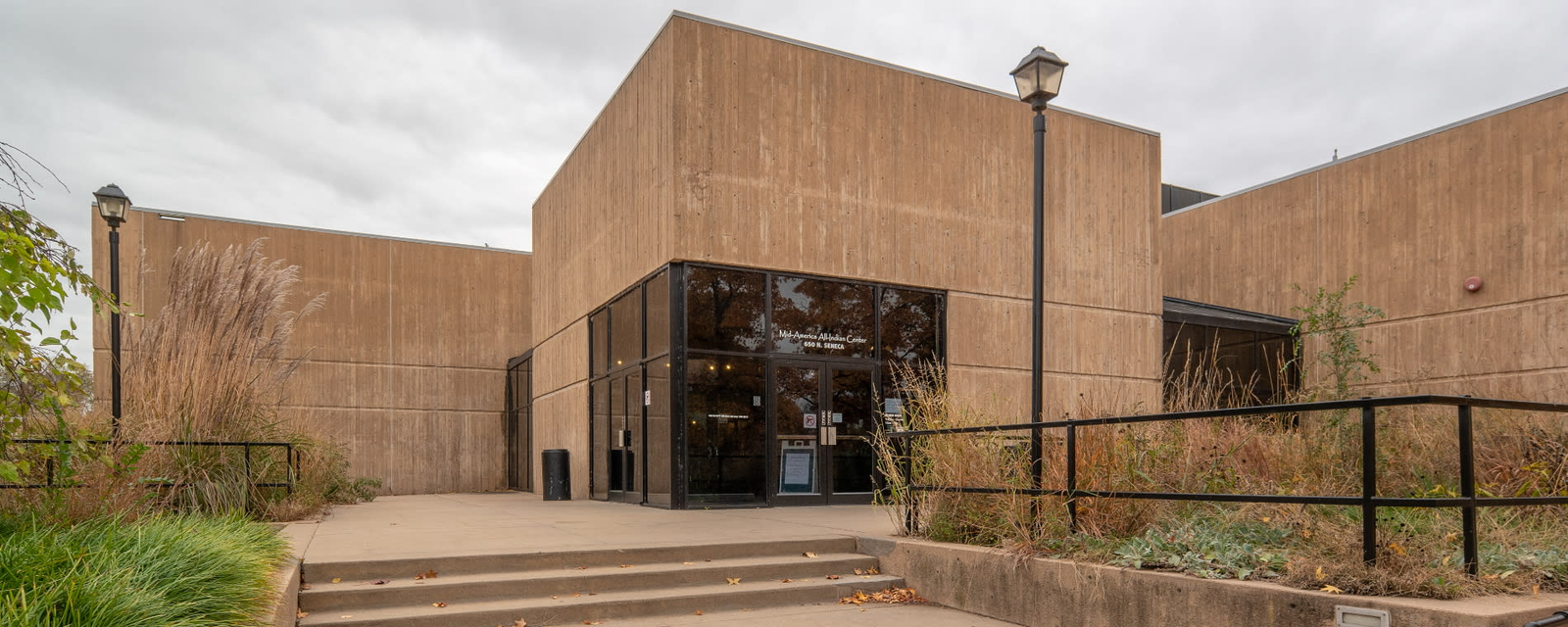
Name and Location: Located in Wichita, Kansas, this center is dedicated to preserving and promoting the culture and heritage of the Native American peoples of the region.
History and Significance: Established to serve as a cultural center and museum for Native American artifacts and art, offering insights into the diverse cultures of indigenous peoples.
What to Expect: Exhibits featuring traditional and contemporary Native American art, cultural demonstrations, and educational programs.
Visitor Information: A modest admission fee is required. The center hosts special events, powwows, and workshops throughout the year.
For an in-depth look at Native American life, travel to the Mid-America All-Indian Center in west Wichita. This cultural center and museum strives to educate visitors about tribes across North America through engaging exhibits and programming. Guests can explore replica dwellings from the past including a grass lodge, wigwam, wikiup and longhouse displaying authentic furnishings. Lifelike dioramas feature Native Americans undertaking traditional activities like hunting buffalo, fishing, beading and hide tanning.
The museum also showcases impressive collections of Native American artifacts such as brightly colored blankets, historically significant clothing and ceremonial objects from tribes across the continent. Rotating temporary exhibits highlight certain aspects of Native culture each season too. Beyond educational displays, the All-Indian Center hosts exciting events like instrument workshops, best-fancy-Shawl contests, basketball tournaments and more.
Little Balkans Museum
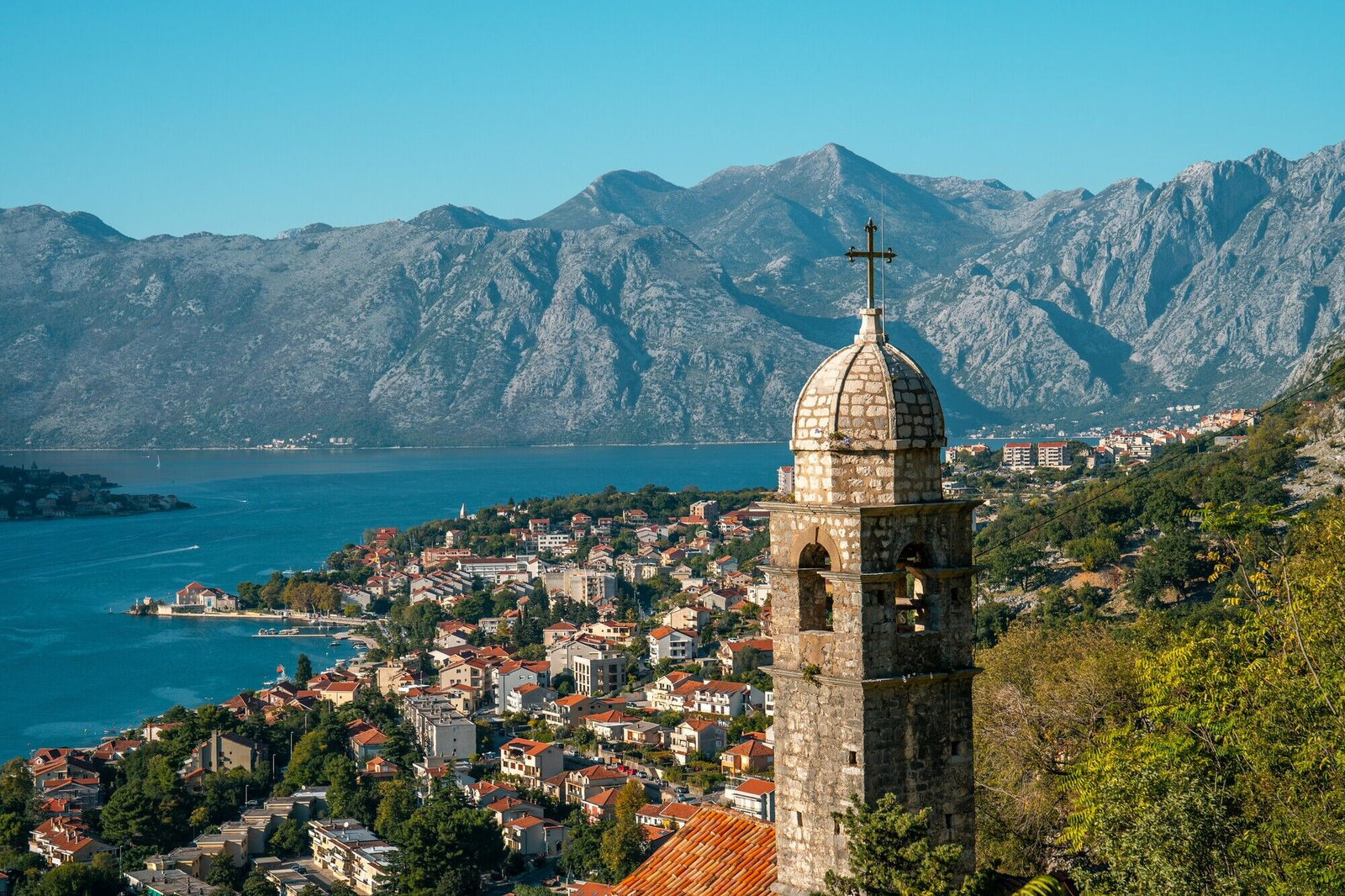
Name and Location: Situated in the region historically known as the Little Balkans of Kansas, this museum focuses on the cultural heritage of the immigrants who settled in the area.
History and Significance: The museum captures the diverse cultural influences of the European immigrants who contributed to the development of southeastern Kansas.
What to Expect: Collections that include photographs, artifacts, and personal stories that illustrate the life and traditions of the immigrant communities.
Visitor Information: Open to the public with free or minimal admission fees. It offers guided tours and educational programs about the region’s history and culture.
Recognizing the significant wave of Balkan immigrants who settled across the plains in the late 1800s, the Little Balkans Museum in Halstead offers an inside look at their history. Visitors can walk through a replica sod home to understand the difficult living conditions these immigrants faced when they first arrived in Kansas. Many fled violence and limited opportunities in their home countries like Ukraine and Croatia for the promise of owning land out west.
The Little Balkans Museum features educational exhibits on the Balkans Peninsula and the customs its many cultural groups brought with them. Authentic costumes, religious icons, musical instruments and more help explain the old-world traditions kept alive here on the prairie. Make sure to venture upstairs to see the Heritage Hall lined with photos and artifacts from Balkan families who built new lives in central Kansas farming communities. Outside, vineyards and orchards let guests directly experience agriculture’s importance.
Sedgwick County Park

Name and Location: This expansive park is located in Wichita, Kansas, offering a wide range of outdoor recreational activities.
History and Significance: The park serves as a green oasis in the city, providing a space for leisure, exercise, and community events.
What to Expect: Amenities include walking and biking trails, playgrounds, picnic areas, fishing ponds, and sports facilities.
Visitor Information: Open daily, free admission. The park is a family-friendly venue that hosts various events and festivals throughout the year.
Offering a peaceful natural escape in west Wichita, Sedgwick County Park provides 591 acres of woodlands, wetlands and grassy picnic spots to delight outdoor enthusiasts. Families can lace up their hiking boots to tackle trails winding past the lake, over restored prairie, and through shady stretches of forest. In addition to hiking and wildlife viewing opportunities, the park also includes an 18-hole disc golf course, horseshoe pits and volleyball net.
After working up an appetite on the trails or fields, visitors will find plenty of picnic tables and shelters for unwinding. Sedgwick County Park hosts frequent free community events too like outdoor movies, fishing derbies and craft fairs. Leashed dogs are also allowed in certain areas of the park, giving pet owners space to let their furry friends play and socialize off-leash. Guests wanting to extend their visit can even reserve one of 26 basic but affordable campsites.
Plane Talks Speakers Series
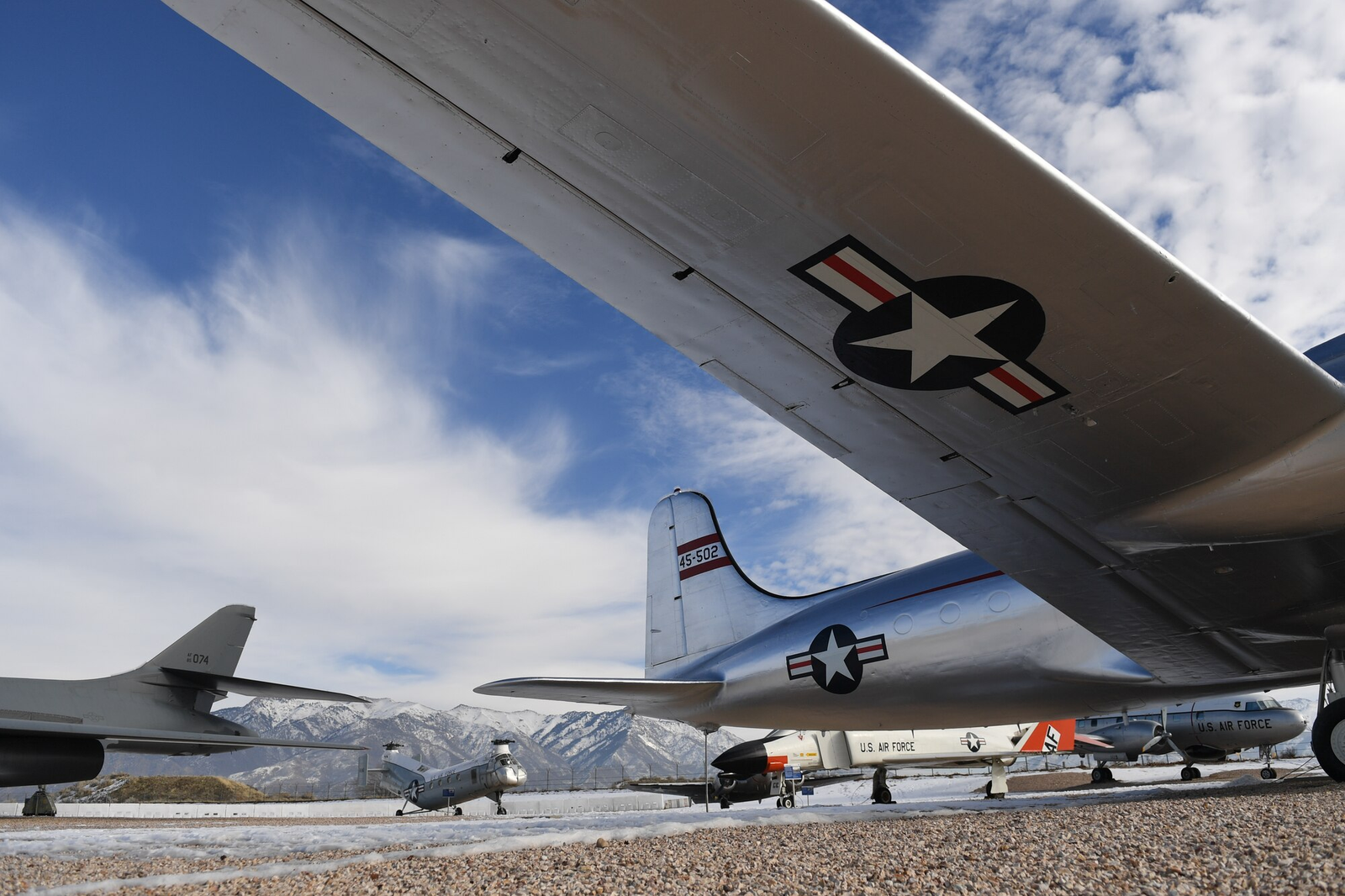
Name and Location: Hosted at various venues in Wichita, Kansas, this series features lectures and presentations on aviation history and technology.
History and Significance: Reflecting Wichita’s status as the “Air Capital of the World,” the series promotes education and interest in aviation through talks by experts and veterans.
What to Expect: Insightful discussions on a range of topics related to aviation, including historical milestones, technological advancements, and personal stories from the field.
Visitor Information: Events are typically open to the public, sometimes requiring registration or a small fee. It’s an excellent opportunity for aviation enthusiasts and students.
As Wichita’s longtime status as the Air Capital of the World would suggest, the city harbors a special passion for aviation. Locals and visitors interested in learning more about Wichita’s one-of-a-kind aerospace landscape can attend free Plane Talks lectures organized by the Wichita Airport Authority. These Plane Talks feature prominent speakers from the local aviation industry discussing topics related to Wichita’s rich history of aircraft manufacturing.
Previous Plane Talks events have covered fascinating aspects of the city’s past and future in flight innovation such as women pioneers in aeronautics, supersonic aircraft development and the promising potential of electric planes. The series aims to inspire future generations of engineers while informing the broader public on important work happening locally in aviation technology. Most Plane Talks take place over weekday lunch hours at the Advanced Learning Library downtown or are live-streamed online for added accessibility.
Urban Prairie Wildflower Tour

Name and Location: This tour takes place in various urban and suburban areas around Wichita, Kansas, showcasing native wildflowers and grasses.
History and Significance: Designed to educate the public about local flora and the importance of native plant conservation, the tour emphasizes sustainable landscaping practices.
What to Expect: A guided exploration of public and private gardens, with experts sharing knowledge about plant species, their ecological roles, and tips for gardening with native plants.
Visitor Information: The tour schedule varies, often taking place in the spring and fall. A fee may be required, and registration is recommended to secure a spot.
Every summer when wildflowers burst into bloom, visitors can embark on self-guided tours across the city to appreciate these vibrant prairie colors firsthand. The Urban Prairie Wildflower Tour highlights public gardens and natural areas in Wichita landscaped with native wildflowers and grasses. Some popular spots featured on the seasonal route include the Overland Station landscaping, the Prairiana Collection at Botanica and Chaplin Nature Center’s restored prairie along the Arkansas River.
Local wildflower experts select a unique mix of locations to include on the tour each year. Guests can pick up printed maps marking over a dozen wildflower sites across the city to serve as guides on the self-drive tours. The urban prairies and wild stretches of riversides offer unexpected pockets of nature to discover across Wichita beyond the city parks. So come summer, grab a map and camera to capture these vibrant native flowers in their glory.
Final Thoughts
With this list of complimentary attractions, it’s easy to see Wichita provides appealing options for free leisure without compromising on experiences. Whether you want to dive into fascinating history and culture or simply enjoy the great outdoors, Wichita has an array of entertaining sites and destinations accessible at no cost. Planning an affordable trip is effortless when focusing your itinerary around these top free things to do in Wichita.

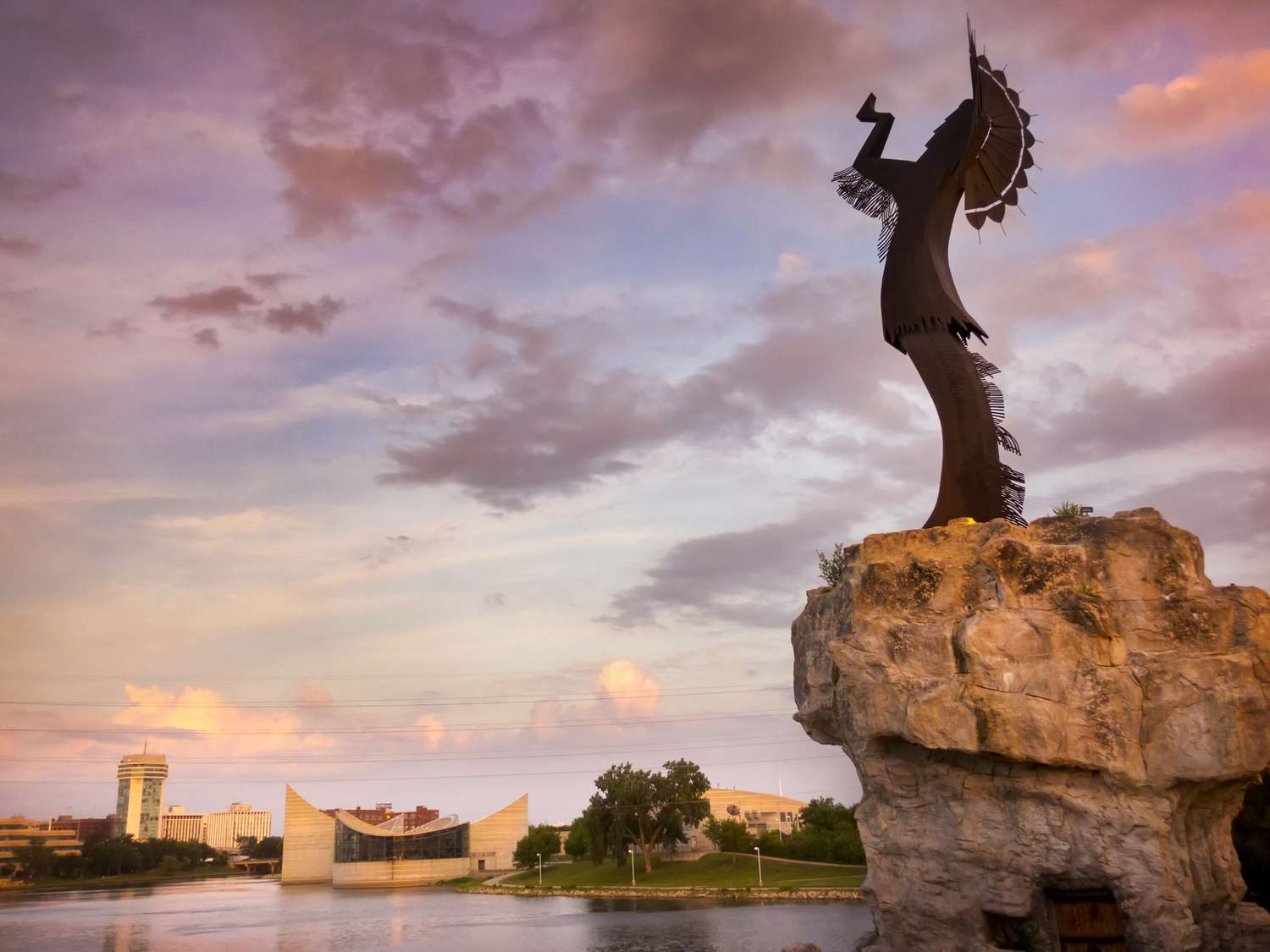



Join the Conversation